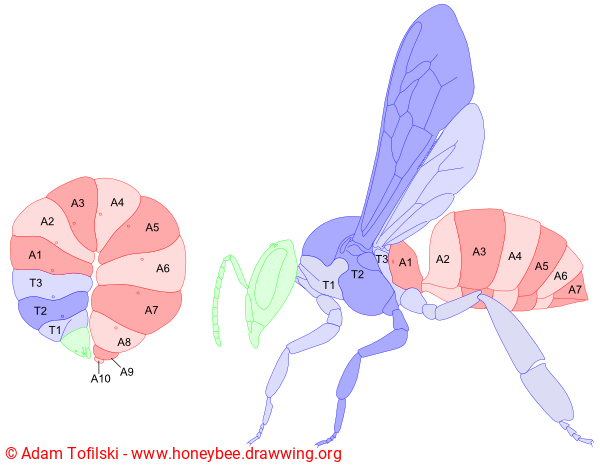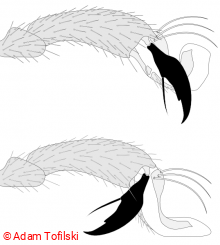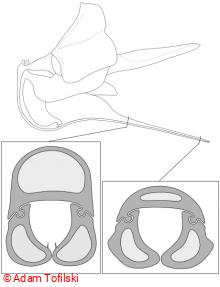
As in all insects, body of honey bee larva (left image) and adult insect (right image) can be divided into segments. The segments can be grouped in three body regions (tagmata): head (marked green), thorax (marked blue) and abdomen (marked red). Head consists of six segments which are visible at early gastrulation stage as transverse grooves Engrailed expression and body segmentation in the honeybee Apis mellifera,
, Volume 198, Number 8, p.467–473, (1990)
[1]. The segments are also visible when stained with antibody raised against engrailed protein Engrailed expression and body segmentation in the honeybee Apis mellifera,
, Volume 198, Number 8, p.467–473, (1990)
[1]. Thorax consists of three segments (labelled T1-T3) and abdomen ten segments (labelled A1-A10). In adult queens and workers only seven abdominal segments (A1-A7) are visible. In drones there is also visible eighth abdominal segment A8 and ventral part (sternite) of ninth abdominal segment.
The body of honey bee is covered with cuticle, which forms an exoskeleton (external skeleton). The exoskeleton is articulated (consists of sections united by joints). It provides support for muscles and allows fast and precise movement. The cuticle protects also internal organs and prevents water loss.
For review see Anatomy of the honey bee,
, Ithaca, p.334, (1956)
[2]Anatomy and dissection of the honeybee,
, London, p.158, (1977)
[3]Form and function in the honey bee,
, Cardiff, p.220, (2003)
[4].
- Log in to post comments
- Log in to post comments





